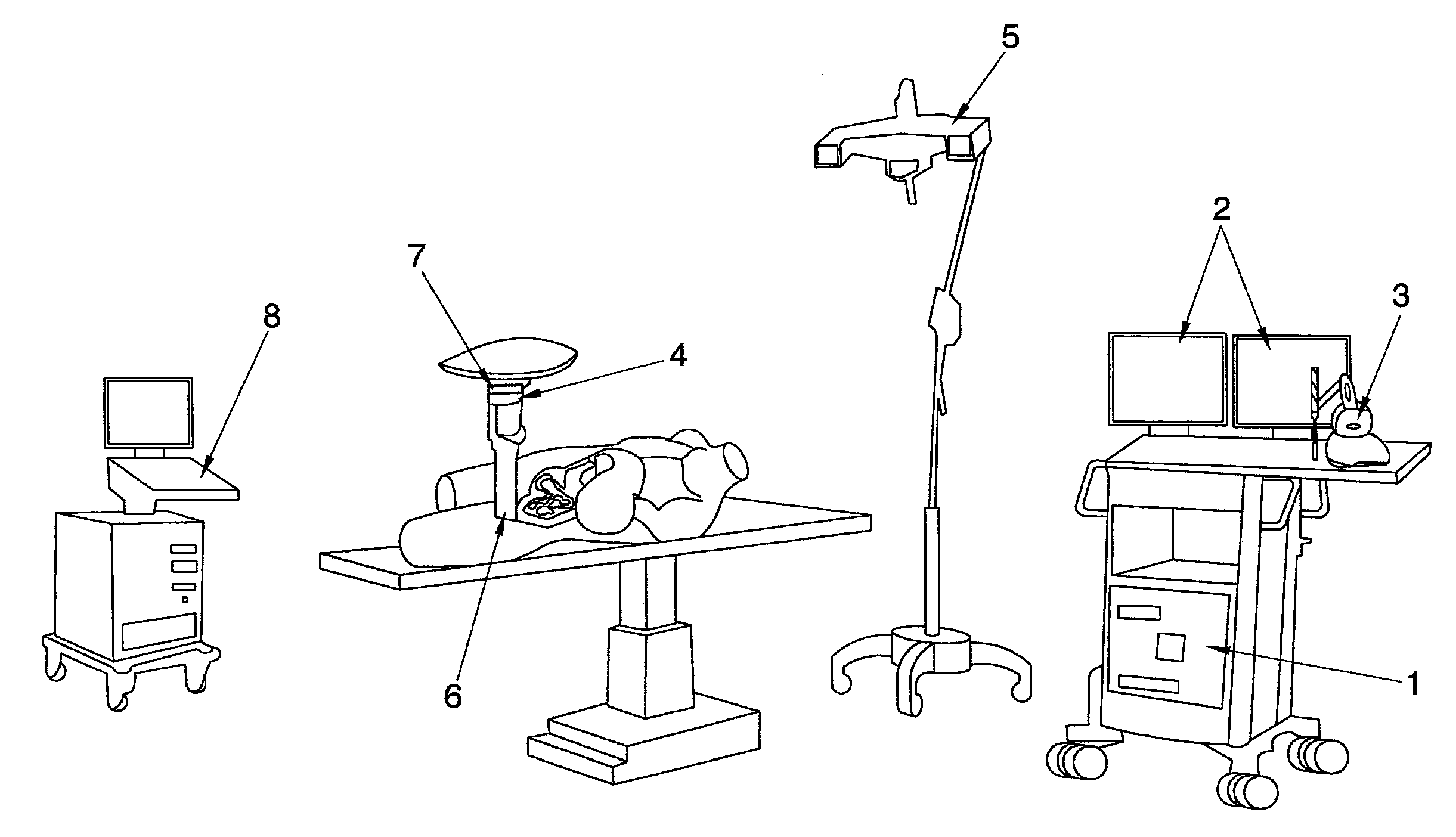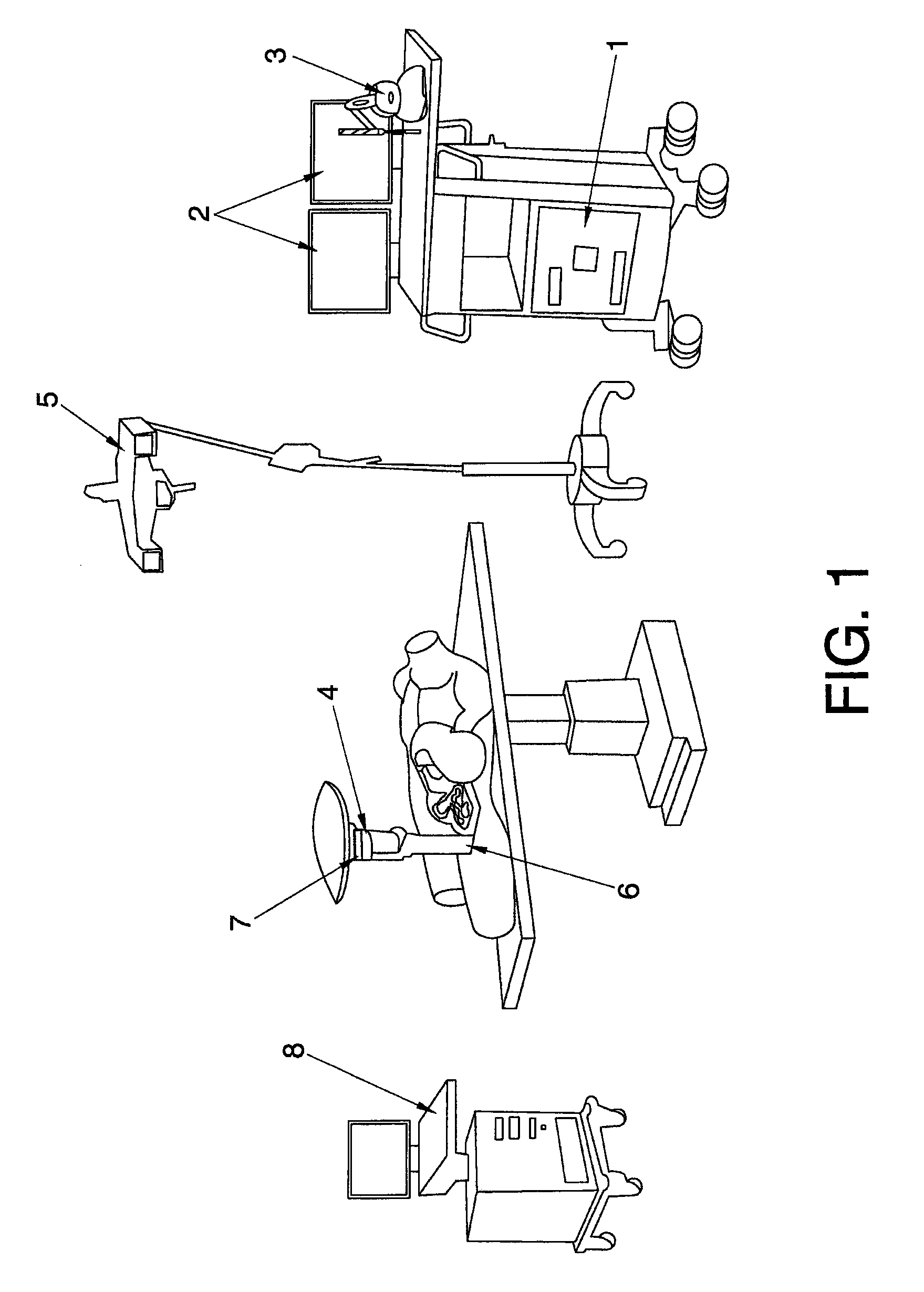Planning system for intraoperative radiation therapy and method for carrying out said planning
a radiation therapy and intraoperative technology, applied in radiation therapy, therapy, analog and hybrid computing, etc., can solve the problems of difficult to estimate modifications, limit both the quality of the radiation therapy and the subsequent patient progress follow-up, and the difficulty of the radiation therapy process
- Summary
- Abstract
- Description
- Claims
- Application Information
AI Technical Summary
Problems solved by technology
Method used
Image
Examples
Embodiment Construction
[0023]The system and method described in the present invention solve all the aforementioned drawbacks as they generally allow training and / or simulating the process of surgery and radiation therapy treatment—including simulating the deformation produced in the organs during surgery and inserting the radiation applicator cone, as well as its interaction with haptic devices—, determining the suitable dose, its distribution throughout the concerned organ, and recording the results in a safe and effective manner.
[0024]In other words, the system of the present invention comprises a dosimetry planner / simulator which favors the intraoperative radiation therapy physical-medical and radiosurgical processes.
[0025]Generally, the planning system for radiation therapy of the invention comprises at least one central processing unit in which different software packages or modules are executed in order to control and manage all the devices responsible for representing images and touch as well as to...
PUM
 Login to View More
Login to View More Abstract
Description
Claims
Application Information
 Login to View More
Login to View More - R&D
- Intellectual Property
- Life Sciences
- Materials
- Tech Scout
- Unparalleled Data Quality
- Higher Quality Content
- 60% Fewer Hallucinations
Browse by: Latest US Patents, China's latest patents, Technical Efficacy Thesaurus, Application Domain, Technology Topic, Popular Technical Reports.
© 2025 PatSnap. All rights reserved.Legal|Privacy policy|Modern Slavery Act Transparency Statement|Sitemap|About US| Contact US: help@patsnap.com



